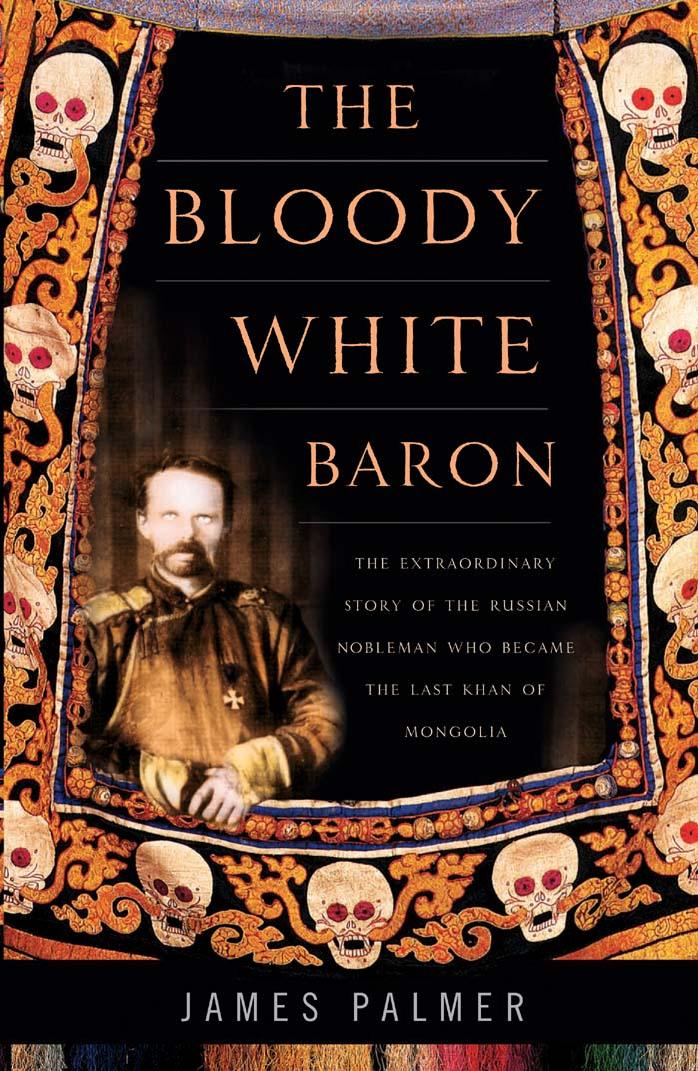The Bloody White Baron: The Extraordinary Story of the Russian Nobleman Who Became the Last Khan of Mongolia by James Palmer

Author:James Palmer
Language: eng
Format: azw3, epub, mobi, pdf
Tags: Non-Fiction, Military History, Asia, Russia, China, Mongolia, War, Biography, History
ISBN: 9780786744282
Publisher: Basic Books
Published: 2008-03-19T13:00:00+00:00
Ungern spoke of the necessity of the âdiscipline of the rodâ which had served his military heroes, Frederick the Great and Nikolas I. Nobody was immune from being seized and beaten; Rezuhin, Klingenberg, Sipailov - all of them were publicly and humiliatingly beaten by Ungern at one time or another. These beatings, interspersed with sporadic praise, seemed only to increase their loyalty to him.
Flogging was the most straightforward of Ungernâs punishment techniques. His cruelty took on much more varied forms, such as a peculiar fascination with torments involving trees. One punishment involved forcing the offender up to the top of a tall tree and making him remain there all night. Those who faltered in this âacrobatic farceâ and fell broke their arms or legs and were shot as useless mouths. For executions, he sometimes ordered his men to bend back a tree, then bound the victim to it to be ripped apart by the branches when it was released. He also employed execution by fire, particularly of deserters or recalcitrant recruits. They were tied to a tree, or herded into barns or houses, then burnt alive.
Some of the stories are so extreme that they have sometimes been attributed to Red propaganda. However, many contemporary accounts, whatever their writersâ feelings about Ungern, agree on the range and inventiveness of his sadistic discipline. Red propaganda about Ungern inevitably concentrated on the atrocities committed against loyal Soviet citizens, not reactionary Whites. Nor did Ungern, when questioned, ever deny any of these cruelties. He was not the only perpetuator by any means, but he was the prime mover.
A culture of cruelty evolved around Ungern whereby officers, both fascinated by and terrified of him, would attempt to imitate and impress him by devising increasingly horrific punishments. Rezuhin, Ungernâs shadow, was particularly keen to copy his master. The physical and cultural isolation of being in the wilderness, surrounded by strange âAsiaticsâ, made the Russians behave even more badly than their contemporaries in the civil war back home. After the war Russian memoirists preferred to blame the majority of the horrors either on the dead or on the âMongolian crueltyâ of Ungernâs non-Russian troops. When they did admit to their own involvement in murder and torture, they found excuses in the madness of war, pressure from their comrades or an understandable terror of Ungern. âIt was kill or be killed in those days,â wrote Alioshin, âand we fought like demons from hell.â
Ungern used a small group of executioners to enforce his punishments. These were hated by even his most dedicated followers, and all witnesses write about them in dramatic and unflattering terms. One particularly loathed figure was Evgenie Burdokovskii, his Cossack ensign. He was
Download
The Bloody White Baron: The Extraordinary Story of the Russian Nobleman Who Became the Last Khan of Mongolia by James Palmer.epub
The Bloody White Baron: The Extraordinary Story of the Russian Nobleman Who Became the Last Khan of Mongolia by James Palmer.mobi
The Bloody White Baron: The Extraordinary Story of the Russian Nobleman Who Became the Last Khan of Mongolia by James Palmer.pdf
This site does not store any files on its server. We only index and link to content provided by other sites. Please contact the content providers to delete copyright contents if any and email us, we'll remove relevant links or contents immediately.
| France | Germany |
| Great Britain | Greece |
| Italy | Rome |
| Russia | Spain & Portugal |
Fanny Burney by Claire Harman(25812)
Empire of the Sikhs by Patwant Singh(22208)
Out of India by Michael Foss(16331)
Leonardo da Vinci by Walter Isaacson(11955)
Small Great Things by Jodi Picoult(6125)
The Six Wives Of Henry VIII (WOMEN IN HISTORY) by Fraser Antonia(4815)
The Wind in My Hair by Masih Alinejad(4441)
The Lonely City by Olivia Laing(4143)
The Crown by Robert Lacey(4127)
A Higher Loyalty: Truth, Lies, and Leadership by James Comey(4060)
The Iron Duke by The Iron Duke(3666)
Millionaire: The Philanderer, Gambler, and Duelist Who Invented Modern Finance by Janet Gleeson(3599)
Sticky Fingers by Joe Hagan(3466)
Alive: The Story of the Andes Survivors by Piers Paul Read(3335)
Papillon (English) by Henri Charrière(3294)
Joan of Arc by Mary Gordon(3282)
Stalin by Stephen Kotkin(3108)
Aleister Crowley: The Biography by Tobias Churton(3041)
Ants Among Elephants by Sujatha Gidla(2938)
